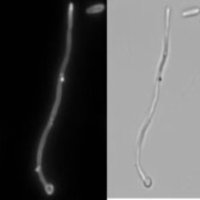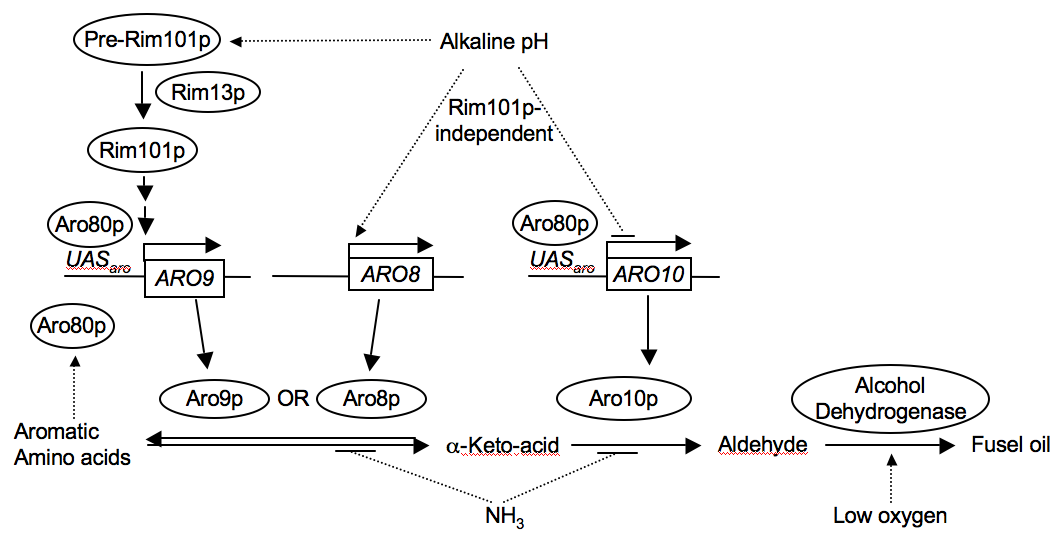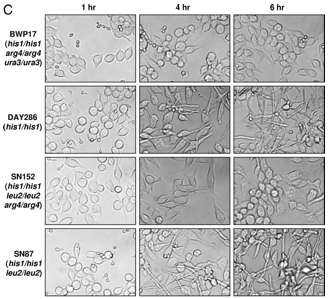 |
 |
One of the hallmark features of eukaryotic cell is the presence of nucleus which separates chromosomes from cytoplasm by NE. NE consists of mostly lipids, integral membrane proteins, and protein complexes such as nuclear pore complexes (NPCs). Outer nuclear membrane (ONM) is continuous with ER and connects with inner nuclear membrane (INM) at NPCs. In most eukaryotic cells nuclear lamina (lamins) are found with INM generally attached by farnesylation. Nuclear lamins along with lamin associated proteins are attached with transcriptionally inactive chromosomes and contribute to intranuclear chromosome arrangements. Mutation and defects in these lamins cause variety of diseases and pathological disorders collectively known as laminopathies. These are directly linked with abnormal shapes of nucleus and NE, abnormal fat tissue formation, premature aging. Unicellular eukaryotes do not have lamins. Chromosomes in unicellular eukaryotes directly attach with NE proteins. When cells undergo mitosis NE disassembles and the micrtotubules from centrosomes attach with the chromosomes. After chromosome segregation NE regenerates around the newly divided chromosomes to give rise two daughter nuclei. In several fungi including the budding yeast (Saccharomyces cerevisiae), closed mitosis occurs in which NE does not dissociate. Instead of centrosomes, spindle pole body (SPB), which is always inserted into the NE, gets duplicated. The newly formed SPB gets inserted into the NE membranes and microtubules emanate from both SPB attach with the chromosomes for segregation. NE then fuse together and detach to give rise a mother and daughter nucleus of different sizes. All these events are carefully orchestrated and failure of which results improper chromosome segregation, which gives rise to several genetic disorders including cancer. Maintenance of nuclear size ratio between mother and daughter is also critical in terms of transfer of materials from mother to daughter, which is directly related to aging. Nuclei are generally spherical in order to contain everything in minimum volume. Altered nuclear morphology can attribute to change in intranuclear chromosome organization and gene expression, improper SPB positioning and thereby improper chromosome segregation. Altered nuclear shape is associated with cancer and aging. Reduced rigidity from the loss of circularity also facilitates formation of metastases.
Our recent work on domain analysis revealed that mps3G186K was
essential for growth. The strain mps3G186K was defective in SPB
duplication and electron microscopy (EM) revealed that the strain has
several layers of nuclear membranes. However, the growth defects of
mps3G186K could be suppressed by changing NE environments. The growth
defect of mps3G186K was reverted by growing at higher temperature, or by
addition of benzyl alcohol (membrane fluidizer), oleic acid (membrane
fluidizer), terbinafine, ketoconazole (sterol biosynthesis inhibitors).
Similarly, mps3 pom152 double deletion mutants were defective in growth
in the presence of benzyl alcohol, terbinafine, and ketoconazole at high
temperature in mps3 dependent manner. Lipidomics study revealed that
pom152 strains had overall lower levels of di acyl glycerol (DAG) and
steryl esters which was restored while mps3 was disrupted. Total levels
of tri acyl glycerol (TAG) was double in mps3 mutants compared to the WT
strains; the levels of sphingolipids (Inositol phosphor ceramide) were
about half of the WT levels. Both of them are having roles in membrane
fluidity. From our studies with drugs and lipidomics analysis we
hypothesize that maintaining membrane fluidity of NE is critical for
macromolecules insertion. | When the mutant protein MPS3-G186K is expressed in yeast cells,
deformations in their nuclei (shown in green) become apparent; in some
cases such as the upper right cell, regions of the nucleus appear to
form lobes, which can then bud from and fuse with each other. The
nuclear membrane and the ER are shown in red.
|
Another research focus is the role of Mps3 in nuclear organization
such as sister chromatid cohesion, telomere tethering, gene silencing
etc. I am currently working on how Mps3 is acetylated by Eco1 (acetyl
transferase) after Mps3 is localized to the inner nuclear membrane.
Acetylation of Mps3 is critical for proper nuclear organization.
Candida albicans is a
polymorphic opportunistic pathogen and causes candidiasis in
immune-compromised patients. I am interested in finding out factors that
are important for morphogenesis. Different physiological conditions
such as high temperature, alkaline pH, availability of serum, N-acetyl
glucosamine, nitrogen, inside the phagosome of macrophages contribute
yeast to hyphal switch.
Aromatic amino acids are not synthesized by humans, and must be synthesized by C. albicans in order to survive inside hosts. Thus it is important for the pathogen to regulate these amino acid biosyntheses and metabolism. Our group focuses on the aromatic amino acid metabolism to understand how this pathway is being regulated in C. albicans (figure below, Ghosh et al 2008), hoping to find unique mechanism or target specific to this opportunistic fungal pathogen. C. albicans like yeast S. cerevisiae utilizes the amino groups of aromatic amino acids but cannot use the carbon skeleton. Instead, they secrete these carbon skeletons as aromatic alcohols, otherwise known as fusel alcohols or fusel oils, by a very common mechanism known as Ehrlich’s pathway. Our group have identified that this fusel oil pathway is critically regulated by different transcription factors such as: Aro80p, Gcn4p, and Rim101p in different physiologically important conditions. |  |
 | Host pathogen interaction: The main reservoir of opportunistic pathogen C.
albicans is the mammalian body where they reside as commensal. In
compromised immune conditions C.
albicans can cause superficial to deep rooted infection
candidiasis. In some cases C. albicans
can also reach the bloodstream and cause disseminated candidiasis which is
fatal to immune-compromised patients. Once C. albicans reaches the bloodstream, they interact with
the components of immune system. Macrophages are among the first innate
immune components that phagocytize C.
albicans. C. albicans
after being engulfed by the macrophages shifts its metabolism from
glycolysis to gluconeogenesis, down-regulates translation, switches from
yeast to hyphae, pierces the phagolysosome, and comes out of macrophage
by killing it, all within six hours. Among the early responses one
glaring response was up-regulation of all the arginine biosynthetic
genes except ARG2. We have identified that C. albicans can utilize arginine and induce hyphal
morphogenesis in cAMP dependent PKA pathway that is critical for their
escape from macrophages. The figure below (Ghosh et al 2009) shows that
arginine auxotrophic mutants of C. albicans are defective in
forming germ tubes inside the macrophages whereas other amino acid
auxotrophs are not, and thereby can escape from macrophages within 6 hrs
time period. |